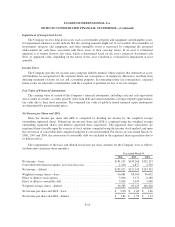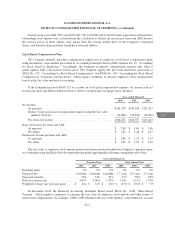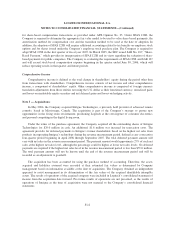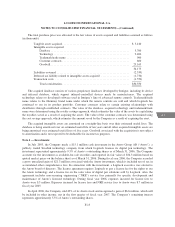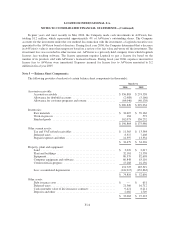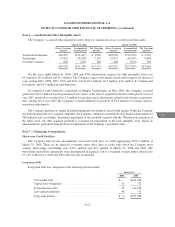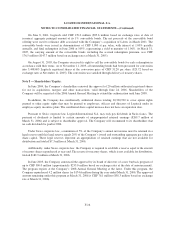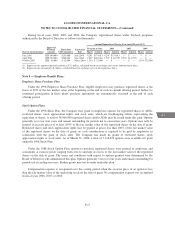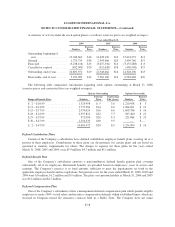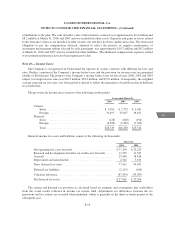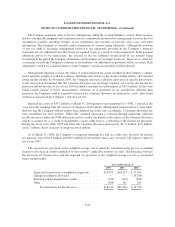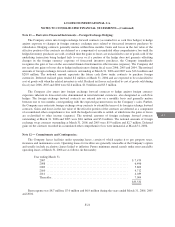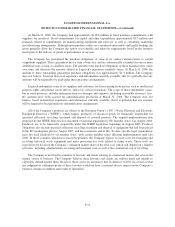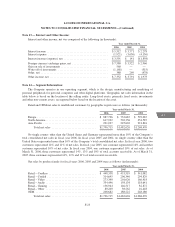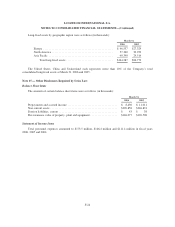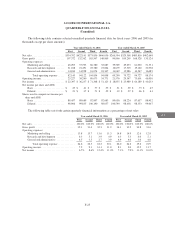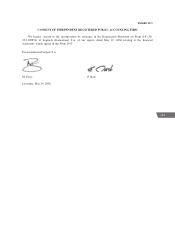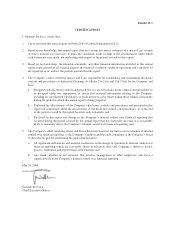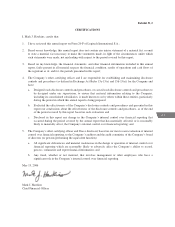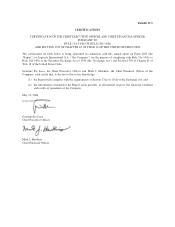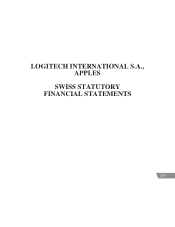Logitech 2006 Annual Report Download - page 143
Download and view the complete annual report
Please find page 143 of the 2006 Logitech annual report below. You can navigate through the pages in the report by either clicking on the pages listed below, or by using the keyword search tool below to find specific information within the annual report.
LOGITECH INTERNATIONAL S.A.
NOTES TO CONSOLIDATED FINANCIAL STATEMENTS—(Continued)
The Company maintains reserves for tax contingencies within the accrued liabilities account. These reserves
involve considerable judgment and estimation and are continuously monitored by management based on the best
information available including changes in tax regulations, the outcome of relevant court cases, and other
information. The Company is currently under examination by various taxing authorities. Although the outcome
of any tax audit is uncertain, management believes it has adequately provided in the Company’s financial
statements for any additional taxes that it may be required to pay as a result of such examinations. If the payment
ultimately proves to be unnecessary, the reversal of the tax liabilities would result in tax benefits being
recognized in the period the Company determines such liabilities are no longer necessary. However, if a final tax
assessment exceeds the Company’s estimate of tax liabilities, an additional tax provision will be recorded. Such
adjustments could have a material impact on the Company’s results of operations in future periods.
Management regularly assesses the ability to realize deferred tax assets recorded in the Company’s entities
based upon the weight of available evidence, including such factors as the recent earnings history and expected
future taxable income. In November 2003, the Company released a valuation allowance on specific deferred tax
assets after it had determined that the valuation allowance was no longer required. As a result, the income tax
provision and net income for fiscal year 2004 included a one-time favorable impact of $13.4 million. In the event
future taxable income is below management’s estimates or is generated in tax jurisdictions different than
projected, the Company could be required to increase the valuation allowance for deferred tax assets. This would
result in an increase in the Company’s effective tax rate.
Deferred tax assets of $47.3 million at March 31, 2006 pertain to net operating loss (“NOL”) and tax credit
carry forwards resulting from the exercise of employee stock options. Management believes that it is more likely
than not that the Company will not realize these deferred tax assets and, accordingly, a valuation allowance has
been established for such amounts. When this valuation allowance is released through generating sufficient
taxable income to utilize the NOL deductions and tax credits, the benefit of the release of the valuation allowance
will be accounted for as a credit to shareholders’ equity rather than as a reduction of the income tax provision.
During the fiscal years 2006, 2005 and 2004, the valuation allowance increased by $11.9 million, $1.3 million,
and $.7 million, due to exercises of employee stock options.
As of March 31, 2006, the Company’s foreign net operating loss and tax credit carry forwards for income
tax purposes were $102.6 million and $69.5 million. If not utilized, these carry forwards will begin to expire in
fiscal year 2007.
The expected tax provision at the weighted average rate is generally calculated using pre-tax accounting
income or loss in each country multiplied by that country’s applicable statutory tax rates. The difference between
the provision for income taxes and the expected tax provision at the weighted average tax rate is reconciled
below (in thousands):
Year ended March 31,
2006 2005 2004
Expected tax provision at weighted average rate ....... $29,073 $26,513 $ 27,655
Change in valuation allowance ..................... — — (13,350)
Research and development tax credits ............... (140) (304) (892)
Other ......................................... (184) 131 103
Total provision for income taxes ............... $28,749 $26,340 $ 13,516
F-20


